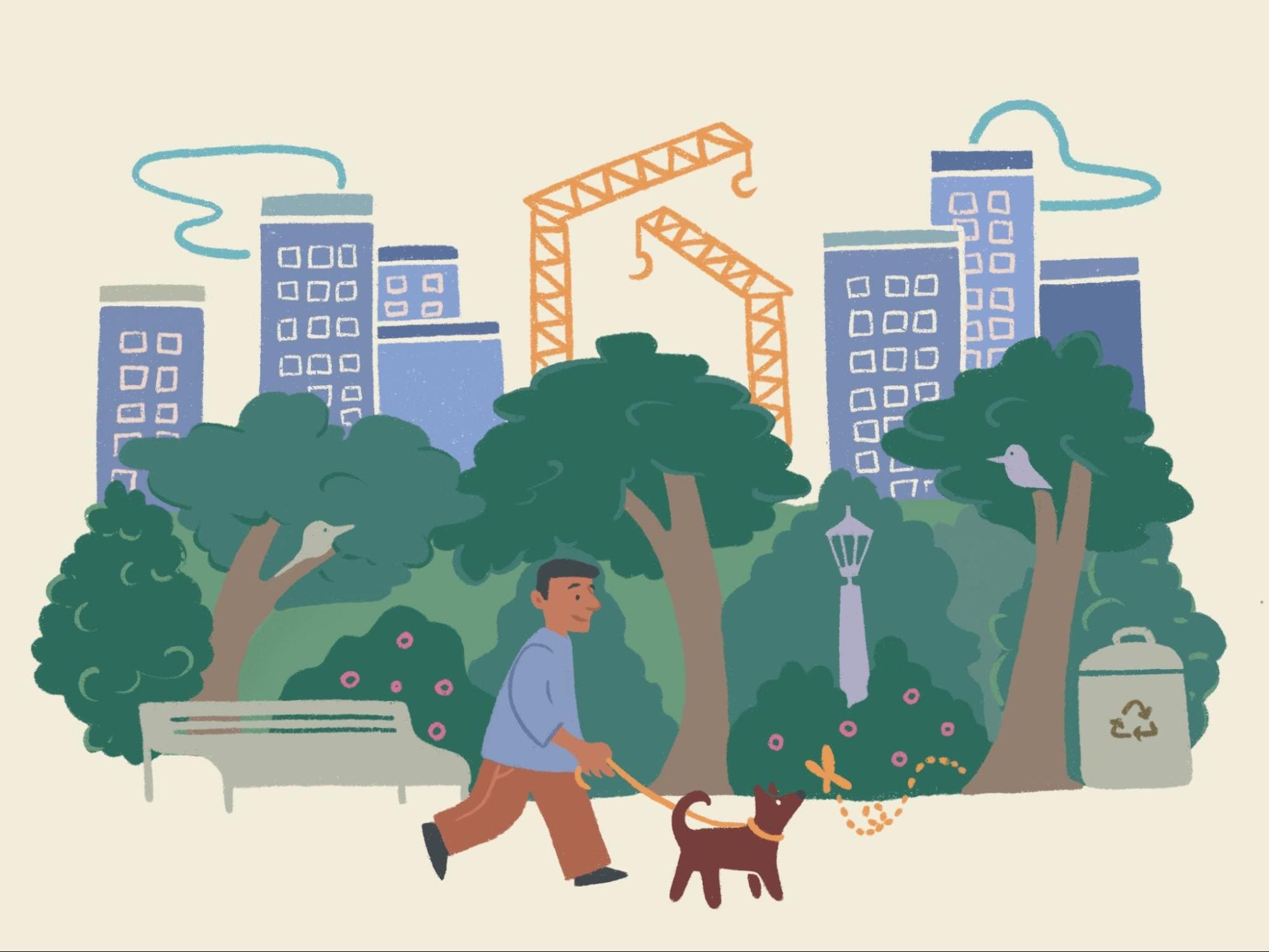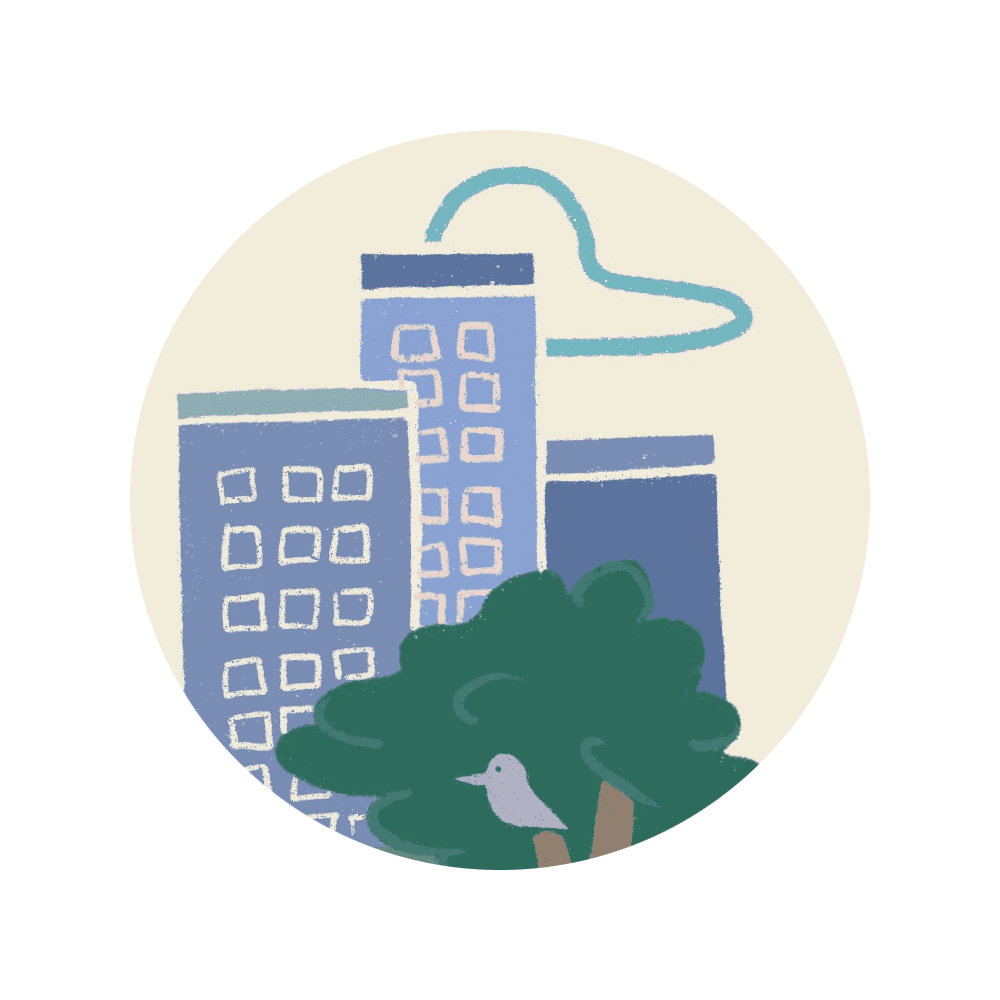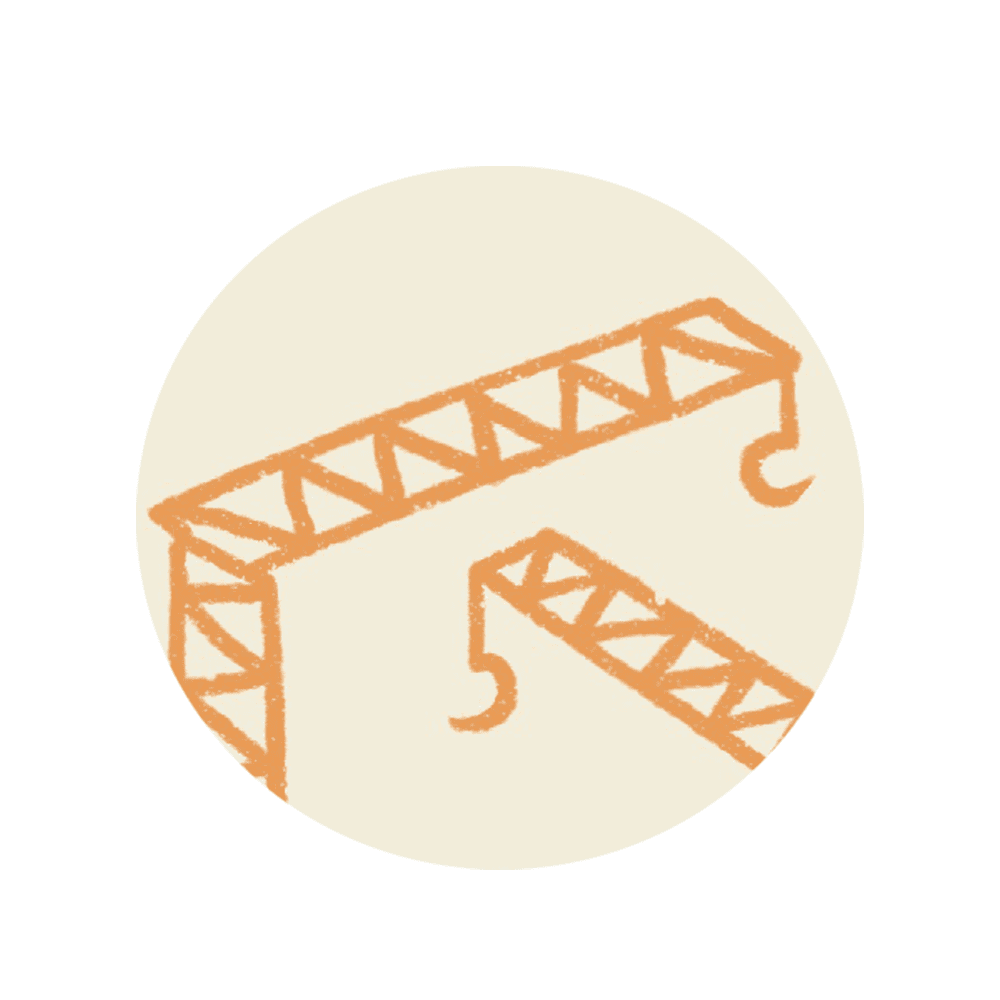
Illustrated by Himanshi Parmar
Urban design shapes how a city looks and how people experience it as they live, as they work, as they come together, and as they move around. Urban design is about people and how they connect to their surroundings. It can play a large role in improving sustainability, quality of life, well being, and health.
The cities most of us live in are inherited from the generations before us that built the buildings that form the skylines we see today. A good way to look at your city from an urban design perspective is to think about it as an organism in which we all live, adding and subtracting with passing years. Every building, home, and sidewalk becoming a piece of the city, and a piece of the lives for all those who call it home. Urban design is the idea that rather than designing a new building with only that building in mind, we design our buildings, sidewalks, and infrastructure around each other in a way that improves the quality of life for those that reside there.

If you could shape your city, what would you add to make it more comfortable? More trees on the sidewalk to give you shade on sunny days? More parks to rest and escape the city? How about street lights that give you a feeling of safety when walking home at night? All of these are considered urban design and can affect the overall feeling of a city. While adding things such as trees, parks, and streetlamps, what if we also added and built around the environment our city came from? The idea of urban design can affect the way we interact with not only our surroundings, but also our environment.
Cities could be built and formed to reduce our carbon footprint, and power themselves with renewable sources of energy. Picture cities with parks and green spaces, solar-powered buildings, rooftop gardens, and more pedestrians and cyclists than cars. This may seem like a futuristic utopia and far from where we are today, but cities all over the world are making changes towards more sustainable urban design.

Copenhagen, Denmark is a perfect example of a city working towards this, and is often ranked one of the greenest cities on the planet. They set out in 2003 to become the first completely carbon neutral capital by 2025, and are getting closer to that goal with every passing year. They've centralized heating systems and implemented innovative cooling systems that have resulted in about a 70% reduction in energy use. On top of this, they’ve also built what's known as “super cycle highways”, leading 45% of their residents to bike to work every day. Other leading cities for creating a sustainable urban designed system include San Francisco, Vancouver, Stockholm, and Singapore. These cities are doing things such as making their public transportation hybrid electric, cutting back on water consumption, and freeing themselves from fossil fuels.
With cities all over the world making the change towards a sustainable future, you start to wonder how you can push your own city in the same direction. Even if your city isn’t making large changes, it's still possible for us to make small changes in our cities that propel us forward. Participating in sustainable practices such as community gardening to promote a healthier lifestyle, utilizing public transportation to cut back on fossil fuels, and switching to energy efficient appliances that minimize waste can make a huge difference when you add it all together. When urban design has the potential to change our cities for the better in more ways than one, let’s take the first steps together.
